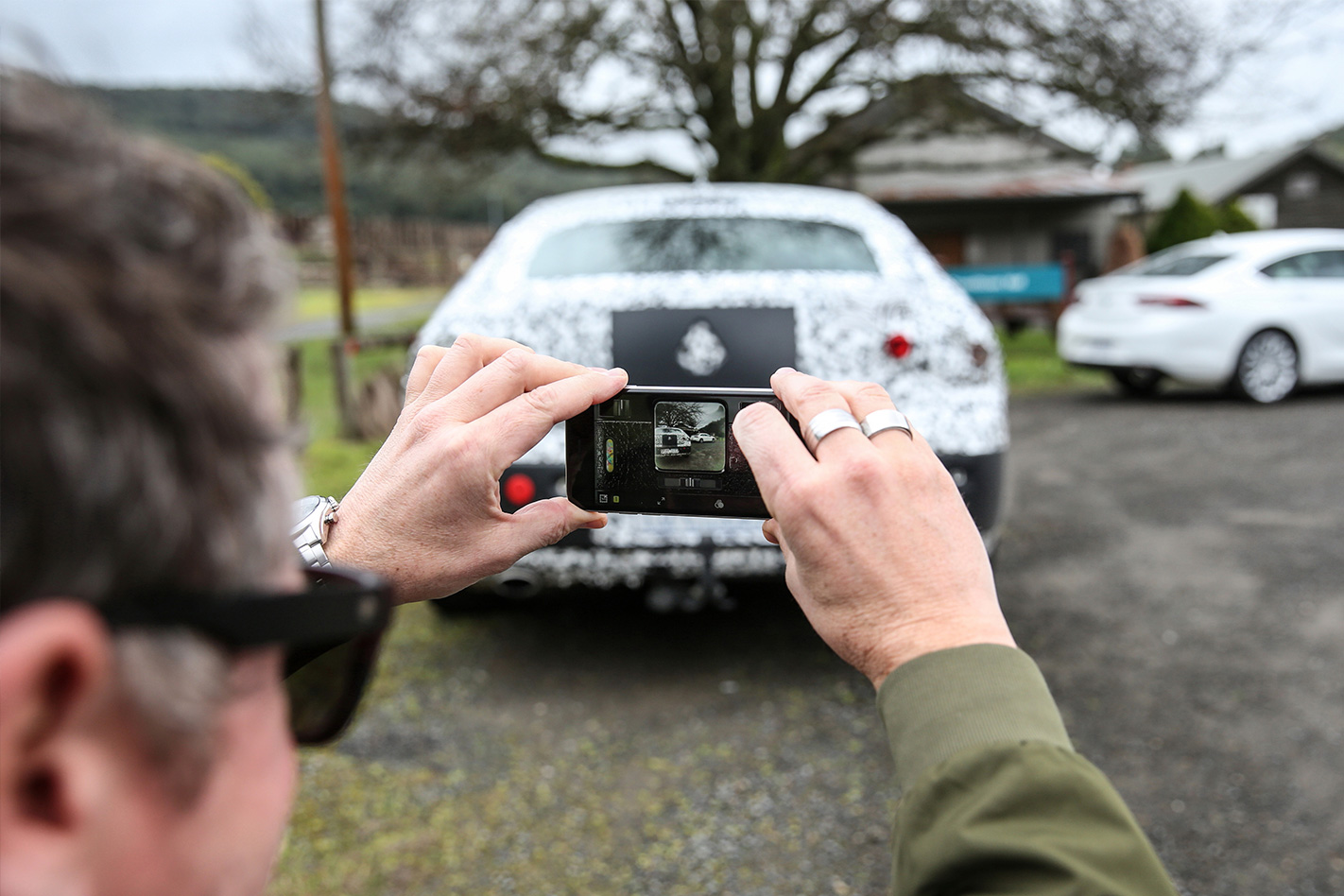ON Friday, October 20, the last Australian built Holden Commodore will roll off the Elizabeth production line.
But it won’t be the end of the Commodore name in Australia, with a European-built and designed replacement being imported from next year. To find out if it is up to the task, we pitted a pre-production ZB Commodore against a trusty VF on Aussie roads.
AS FAR as new-model build-ups go, the ZB Commodore’s 18-month journey from barely there prototype to full-production glamour model could be the most lengthy in Australian automotive history.
Holden’s forthcoming all-new, size-reduced range-topper might be conceptually conceived and built in Germany, but the Aussies are determined to make it known that our next Commodore’s engineering character is very much Australian.
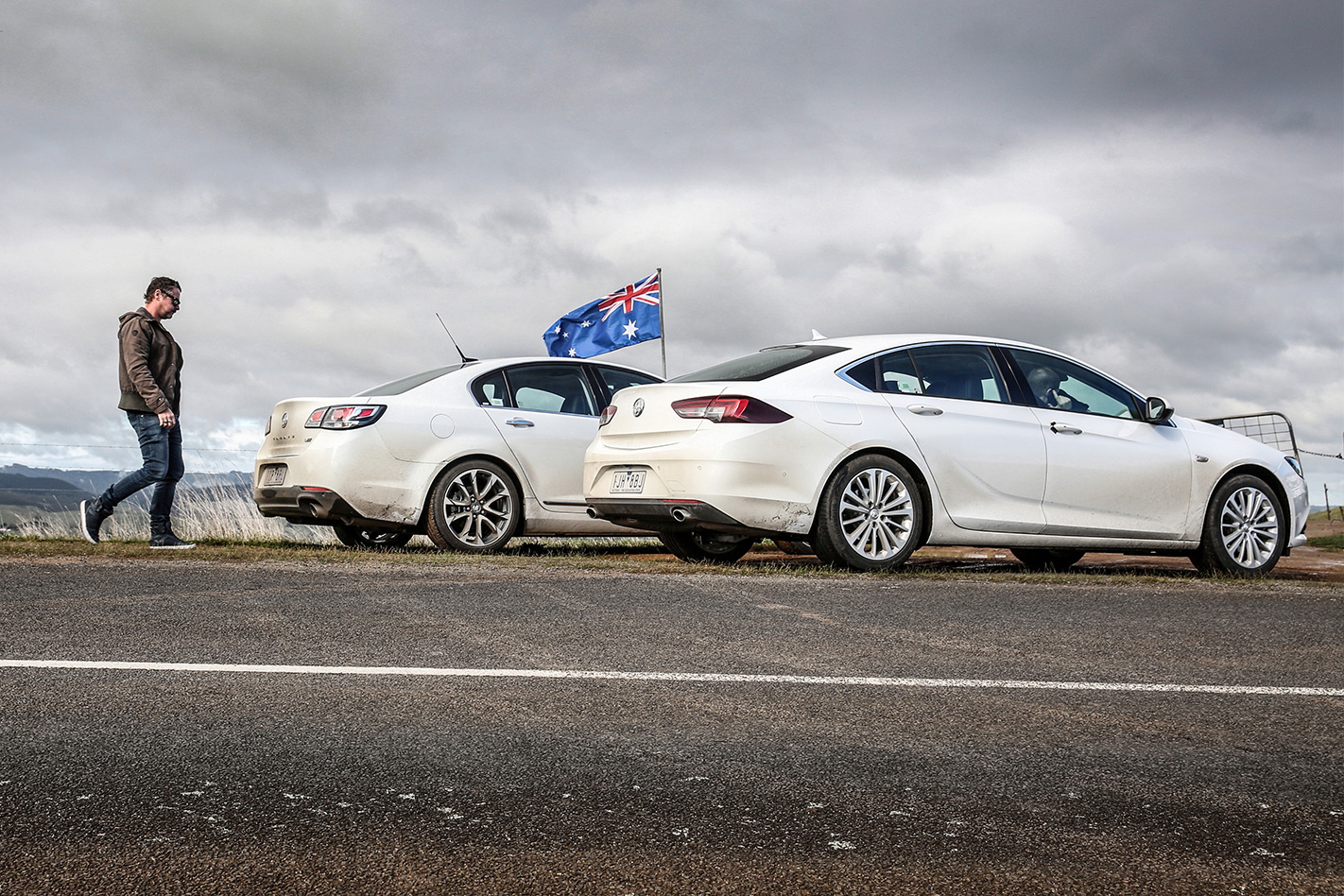
Six months out from the ZB range’s debut, and barely two months before the demise of the rear-drive VFII Commodore line – and Australian automotive manufacturing as a whole – the next significant milestone towards complete range rejuvenation stands before us.
Cue an undisguised ZB Calais and a still-camouflaged ZB V6 AWD – the very same prototype we drove in 2016, but with a year’s worth of engineering improvements – on public roads, accompanied by Holden’s mainstay for the past 11 years, a Zeta-platform rear-driver in the form of a VFII Calais V V6. And we have lead vehicle dynamics engineer Rob Trubiani and vehicle development manager Jeremy Tassone along for the drive.
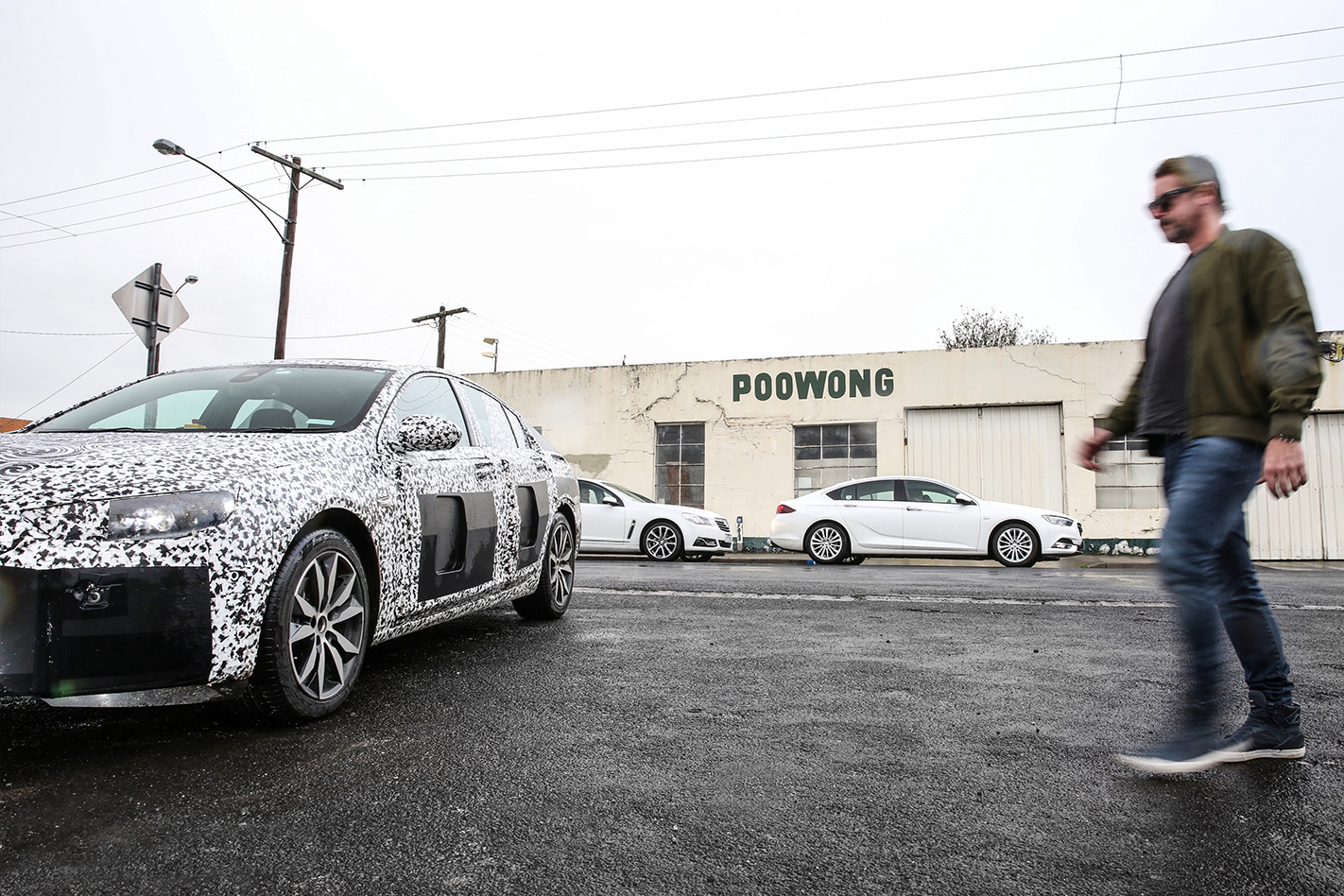
According to GM, it’s the Commodore we had to have, yet there’s something deeply intriguing about a 191kW/350Nm engine providing the thrust for this former company fleet stalwart. The turbo-petrol 2.0 is not only the most powerful base Commodore engine of all time but, arguably more importantly, its 350Nm (spread across a broad plateau) puts the torque outputs of its predecessors decidedly on notice. Even the VFII’s big-capacity 3.6-litre V6 churns out the same 350Nm (at 2800rpm), while the existing 3.0-litre makes do with a far less generous 290Nm.
Thing is, with all that additional muscle, significantly less weight to pull, and another three gear ratios to play with, the front-drive Calais has the potential to be a tyre-frying fizzer. Yet there’s a smooth sweetness to its keen step-off and decisive progress through its abundant ratio set that reeks of refinement. Almost instantly, there’s the sense that this ZB starter pack offers a world-class drivetrain.
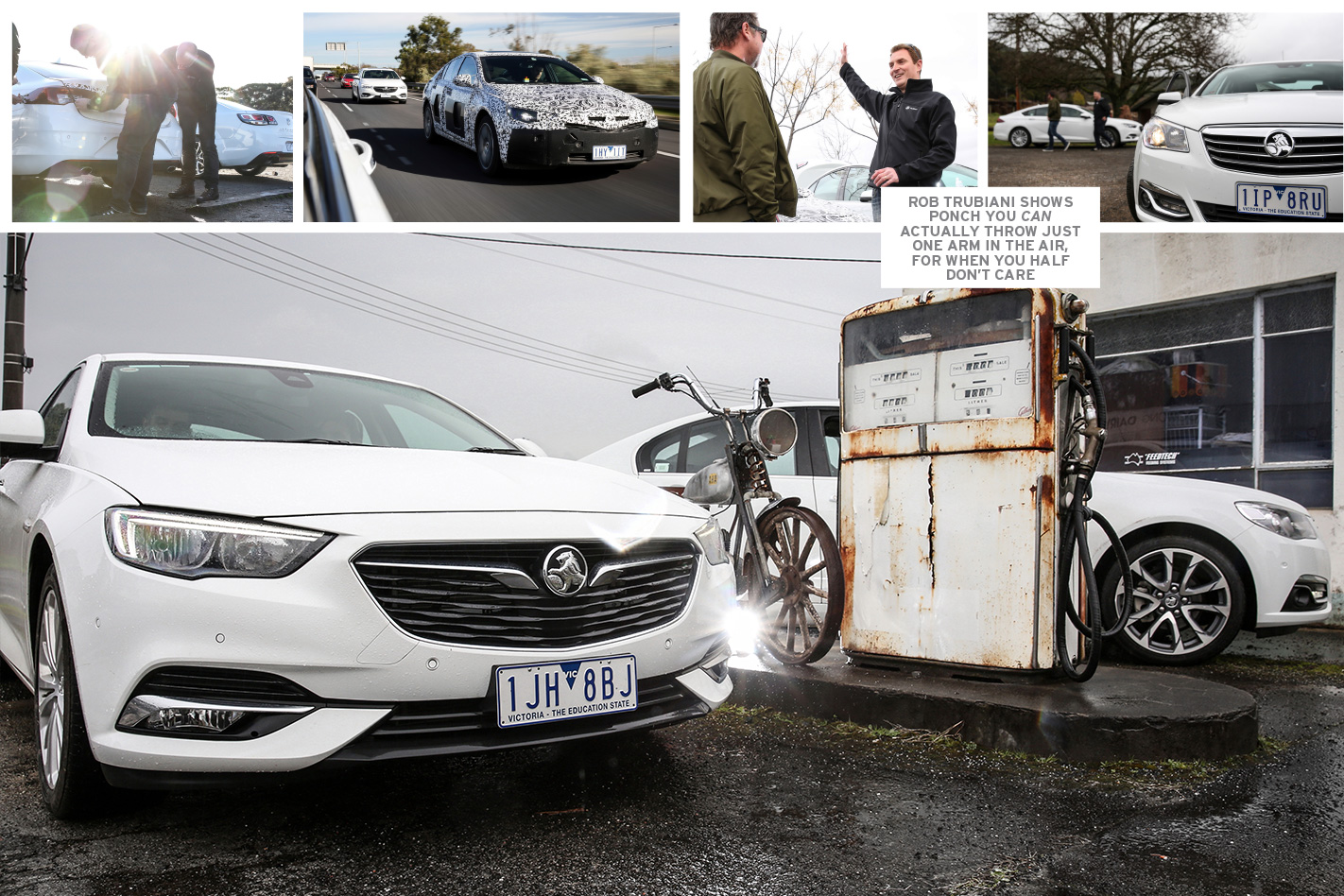
Holden’s Nurburgring-qualified chassis bloke, Rob Trubiani, was similarly surprised when he first fanged the 2.0-litre in Germany: “We headed out onto the autobahn and we were blasting along comfortably at 230-240km/h; the car was doing it effortlessly and I thought, shivers, this is an absolutely potent car.”
There’s almost no lag off the line, and with impossibly tight gearing between second, third and fourth, the 2.0-litre feels remarkably strong in everyday driving situations. It’s only when I really start hammering this front-drive Calais (wearing one-up-from-base-spec 245/45R18 Continental ContiSportContact 5 tyres) that mild torque-steer makes itself known, countered by an impressively subtle ESC modulation that owes much to Holden’s engineering input.

At the Yarra Valley Type 2 diabetes clinic, I mean chocolaterie, which thankfully also serves caffeine, I switch from the almost nondescript white Calais into the heavily camouflaged V6 AWD. A year on from our proving ground drive, the prototype V6 still looks just as outlandish, covered in all manner of plastic bumps and confetti-like body wrap, but its pre-production interior has had its modesty garment removed.
Ironically, it’s the camo ZB that punters are drawn to, completely oblivious to the fact that an undisguised example is parked right next to it. Someone jokes that maybe the best way to hide an unreleased model is to leave it undisguised, though that’s not such a good omen for the Calais. In appliance white with plain halogen headlights and non-event wheels, it looks understated in the extreme.

There’s a different feel inside too. The base ZB Calais’ relatively standard interior conveys the impression you’re in a XXL Astra trimmed with leather, whereas the more upmarket V6 AWD with its jazzier instruments, more heavily bolstered seats, and perforated-leather wheel rim is clearly on another level. And same goes for its drivetrain.
Lusty and refined as the 2.0-litre is, it’s the V6 version – an engine uniquely specified by the Aussies – that provides the most tangible DNA link with the current Commodore.
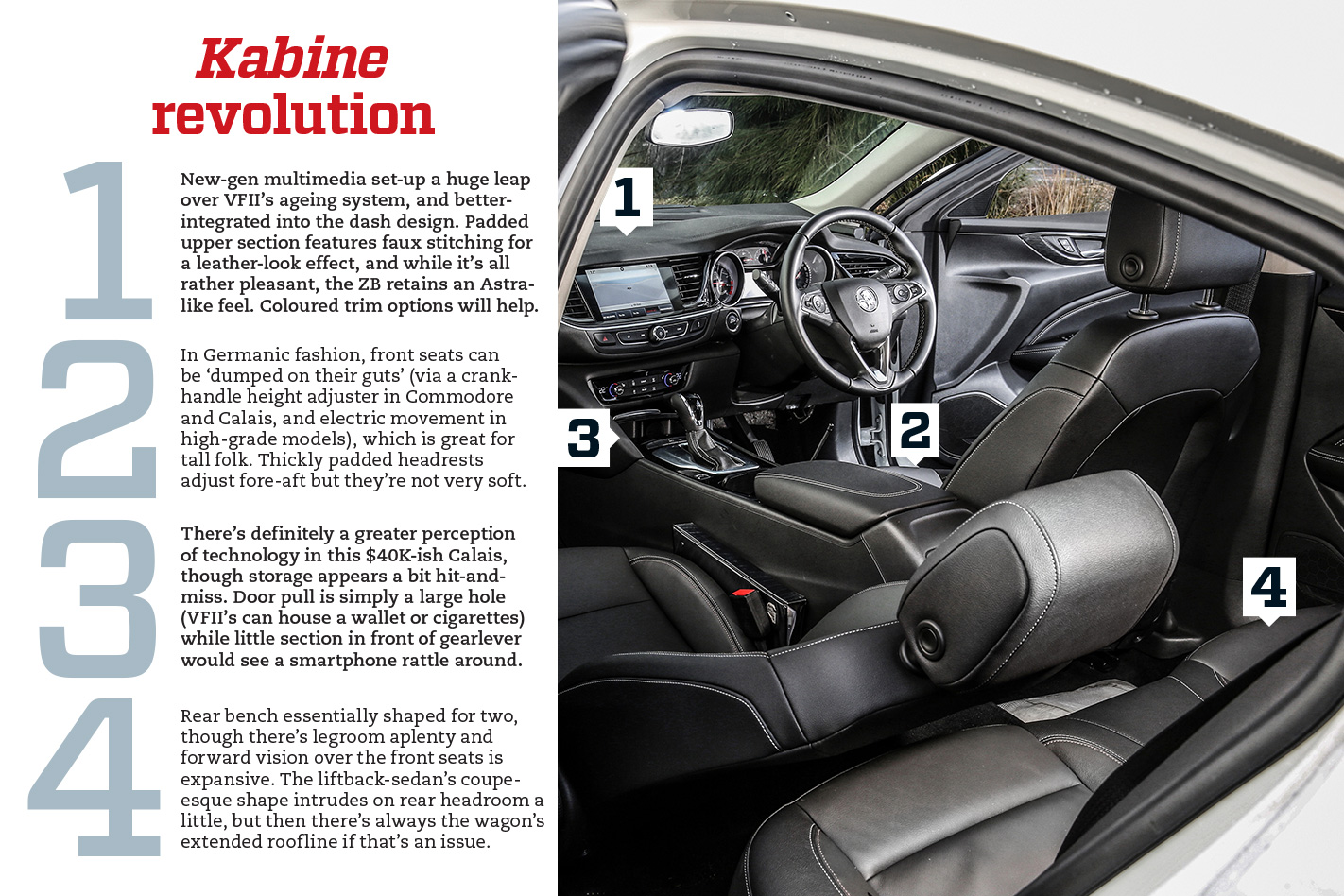
It also revs harder than the four-cylinder. Both engines will soar to 7000rpm, but the floored V6 upshifts at seven grand even in Drive (6500rpm in the 2.0-litre) and sounds like it wants to be caned. It’s still not the sweetest V6 in the world, but it produces a keener, less thrashy note than the 210kW/350Nm ‘LFX’ version in the rear-drive VFII and remains impressively vibration-free at all engine speeds.
“One thing I’ve absolutely loved working on is the V6 AWD,” says Trubiani. “I think once people live with the AWD system, they’ll see how much traction you can deliver and that’s what has really been outstanding for me. We’re able to do things we haven’t been able to do in Commodores before. The drive that you get out of a corner, particularly on a wet or gravel road… the AWD system gives you awesome drive in any conditions.”
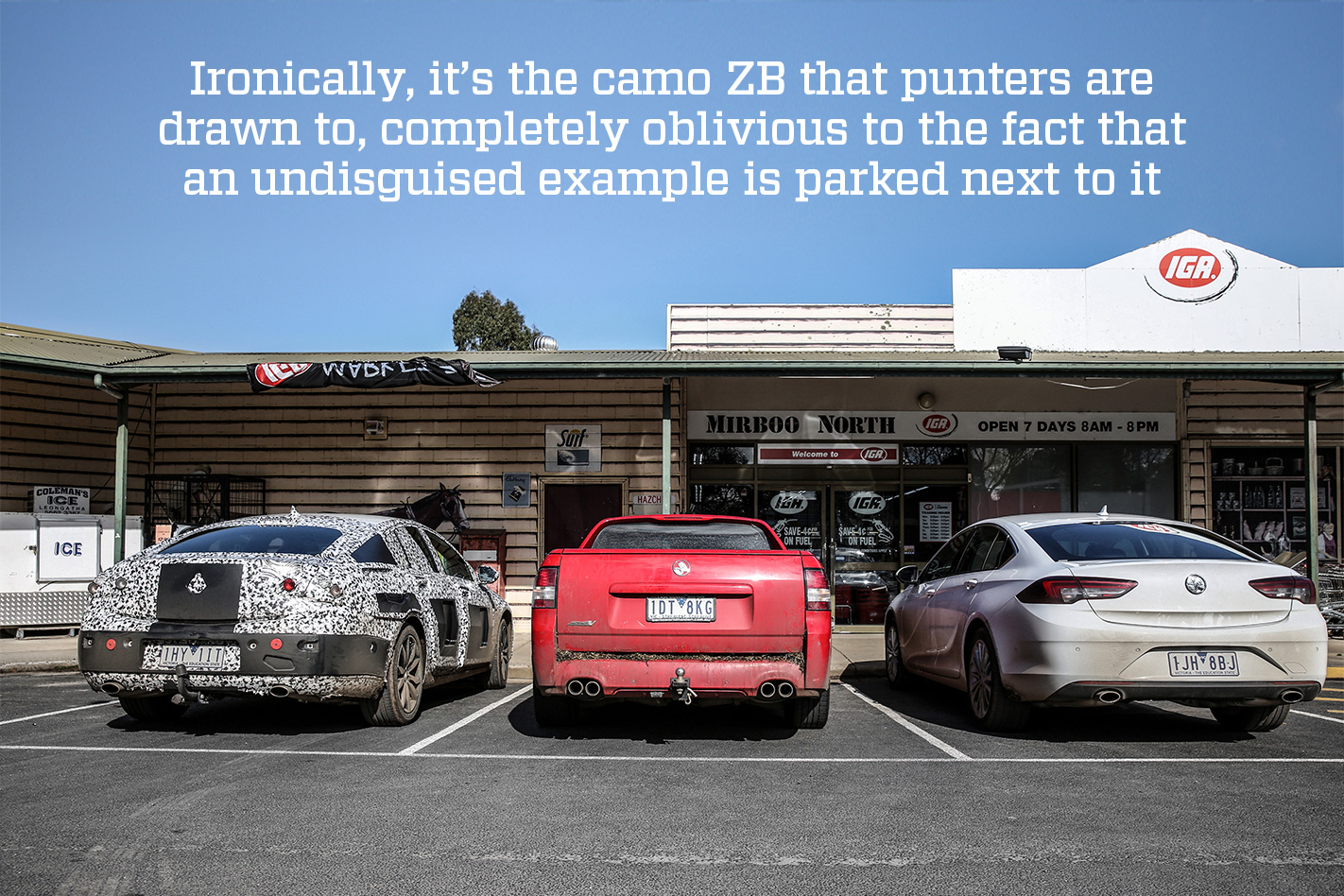
It’s wonderfully light at parking speeds, spanning 2.7 turns lock-to-lock in the V6 (2.8 turns in the four, with its slightly tighter 11.1m turning circle), but utterly seamless in the way it firms up as speeds rise. “Speed blending” is what Trubiani calls it, and they’ve nailed it. Increased hardware and a heavier engine account for the V6’s slightly meatier weight compared to the 2.0-litre, but both deliver beautifully crisp feel, and the V6’s dash of extra heft seems perfectly in keeping with its ballsy personality.
As much of the first afternoon’s monsoonal misery clears, I begin day two in the old girl, or the “current car” as the boys keep reminding me. Not surprisingly, it’s like nuzzling into your favourite pillow. On the 100km/h-limited country roads heading north-east from Inverloch, the VFII Calais V demonstrates why it remains the pinnacle of the Great Australian Road Car. Planted, supple, and comparatively impervious to road imperfections, it’s a more comfortable car than both ZBs, despite the fact it’s wearing larger 19-inch wheels. Apart from some wind noise around the A-pillars, it’s quieter, too, though neither of the new cars have their full “N and V” (noise and vibration) packages installed. And the VFII’s loungier seats somehow suit its more imperious feel.
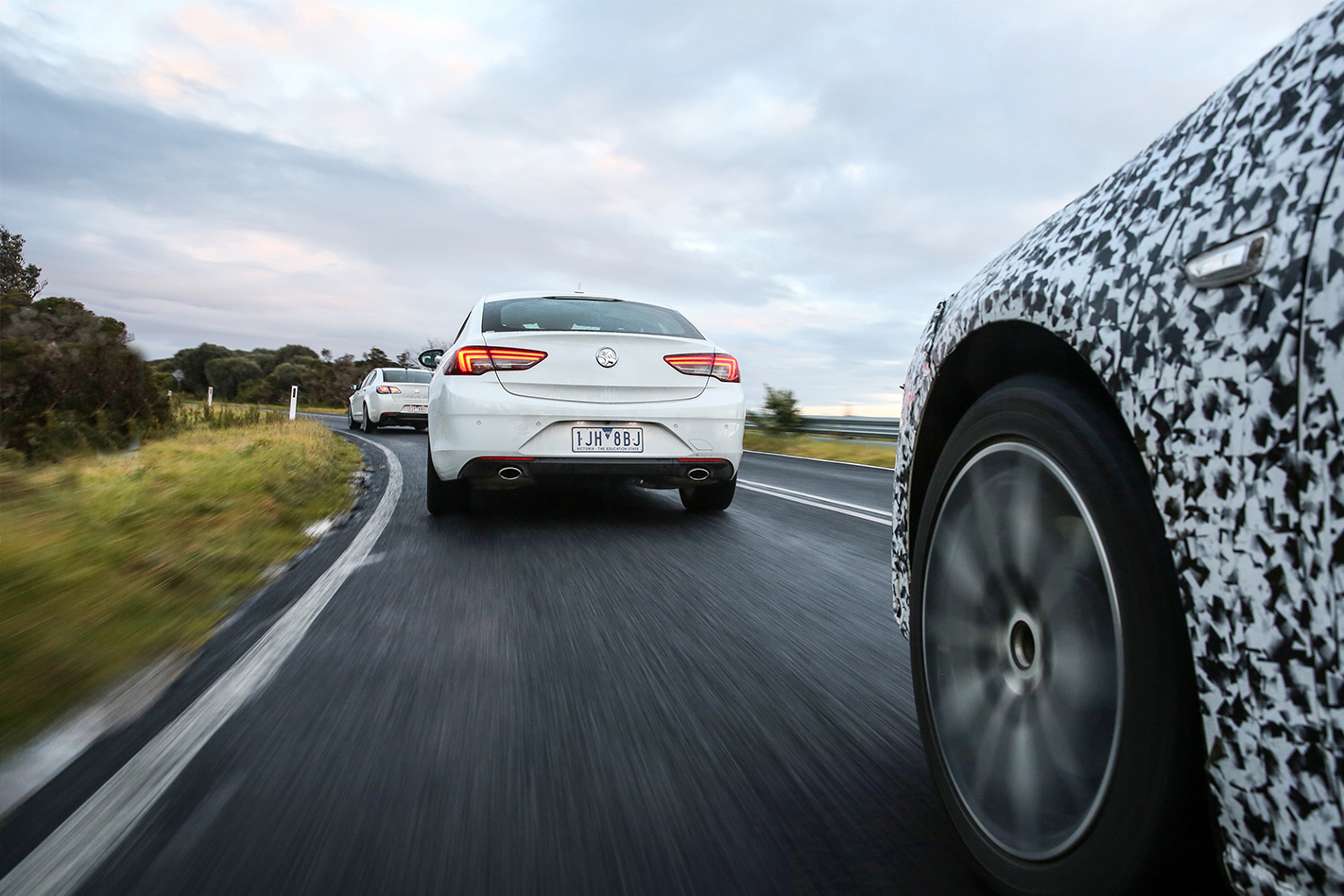
With Holden engineer Henry Weinlich setting a cracking pace, I bring up the rear in the VFII Calais and start to realise this is all a bit like history repeating itself. If the German ZB is the spiritual reincarnation of the original 1978 VB Commodore, then I’m in a latter-day HZ Premier, the last of the old school before youth and technology take over. It’s a slightly weird feeling that it’s taken 39 years for this to come full circle, but here we are. Only this time, things are very different.
With this in mind, I swap to the front-drive ZB Calais. Seated low in an AGR-certified (Campaign for Healthier Backs) seat, the overwhelming initial impression is that this is a bigger, deeper-set, more polished Astra. The front-drive 2.0-litre instantly feels lighter and more nimble than the VFII, mainly because it is, but you can’t discount the positive effect of its trimmer body, neater steering wheel, and sharper turn-in for enhancing that impression.
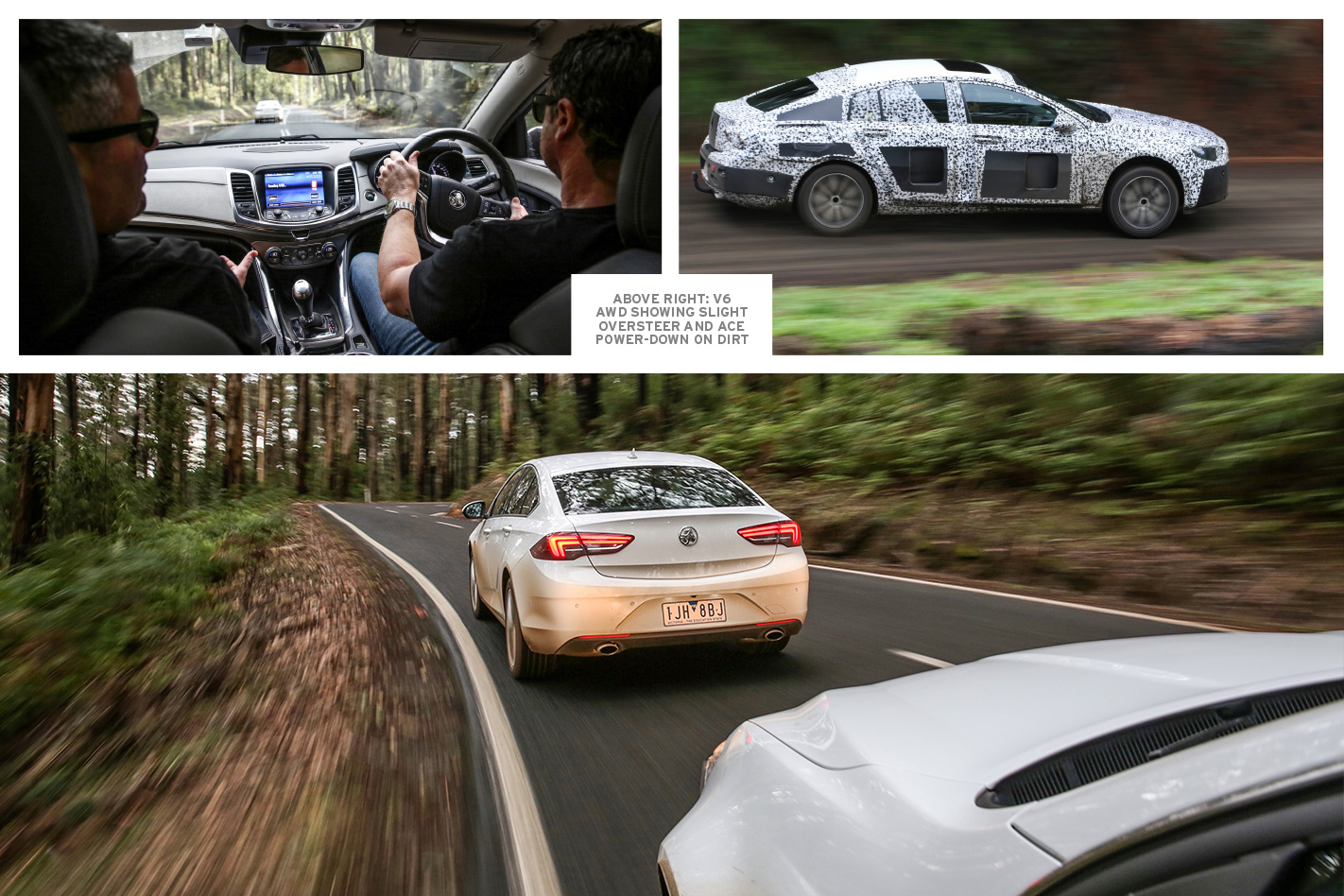
There’s surprising grip out of corners, even on these slightly damp roads, and while there’s some torque steer if your right foot is perpetually mashed to the floor, considering the conditions the front-drive 2.0-litre’s dynamic ability is really impressive. And while its firm ride lacks the loveable suppleness of its rear-drive ancestor, over big, dippy bumps on the Boolarra-Mirboo North Road, its body control is brilliant, befitting the sporty nature Holden has imbued into every ZB model.
Next, the V6 AWD. Without the aforementioned Sport mode available, I test it purely in default mode, and that’s no bad thing. Wearing identical 18-inch rubber to the front-drive Calais but featuring a sportier suspension tune (still dubbed FE2 by Holden engineers; the adaptive-damped VXR’s will be FE3), the V6 AWD is essentially what the SV6 is in the current Commodore range. But smoother, more suave, and more talented.
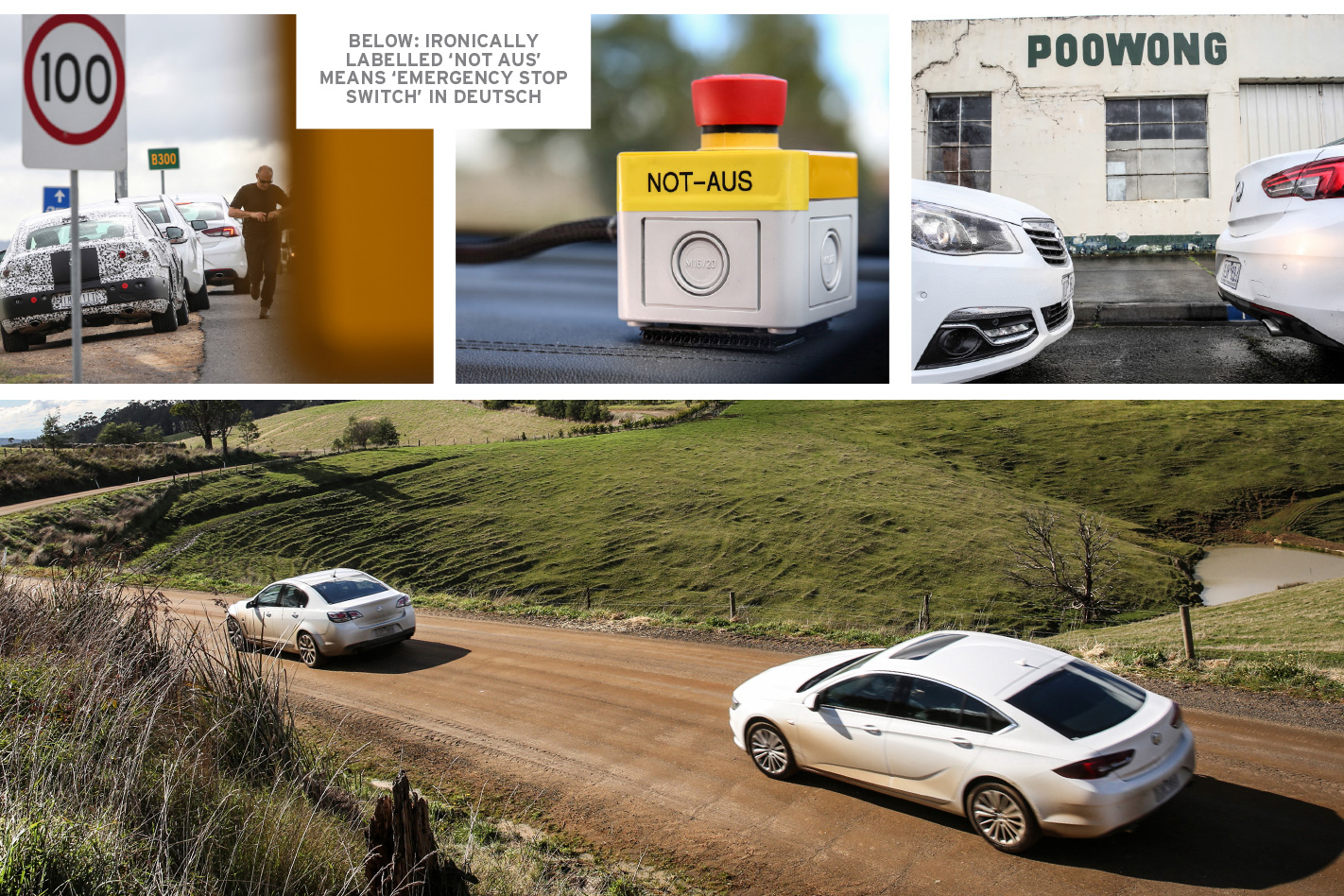
The V6 exhibits that same high-speed damping brilliance as the 2.0-litre, but its Brembo brakes better withstand the test course’s innumerable bends without raising a sweat (the four’s became a little steamy) and its higher-grade AGR seats (with adjustable cushion length, side bolster adjustment, massage function, and two-position memory) are a better fit for its handling ability.
The V6 also gets paddles for its delightful perforated steering wheel, removing the confusion of the arse-about tip-shift of GM’s new auto ’box set-up, but with gearing so tight, you’re often in fourth gear in 45km/h-marked corners. It takes some getting used to. But at least the V6’s brilliant head-up display – shamelessly inspired by a BMW M’s layout – includes a gear-position indicator, among other stuff like a cool bar-graph tacho, or even radio and nav info.
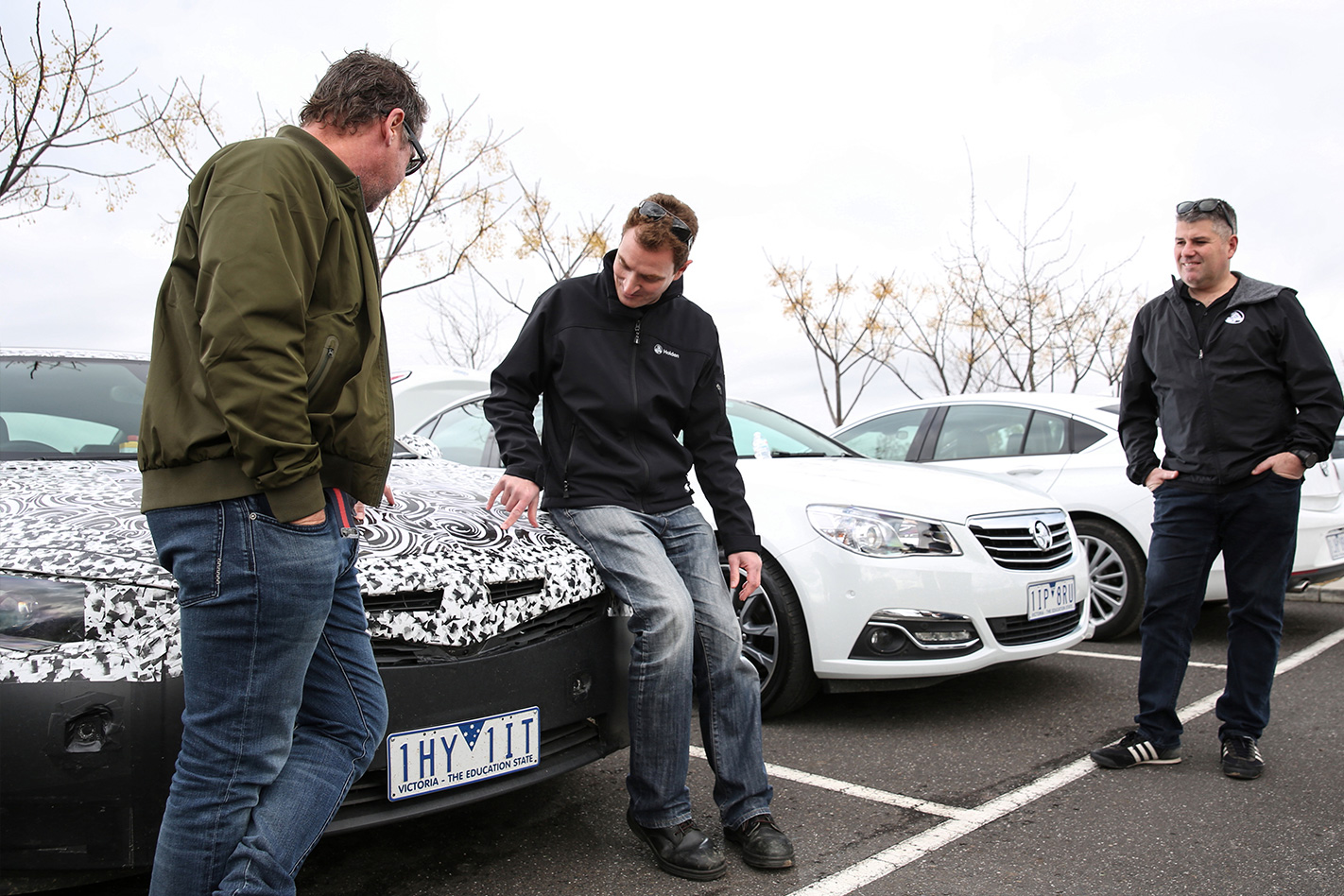
Sure, the VFII’s brake feel is a bit wooden and its lounge-like seats (with a quaint squeak in the test car) lack lateral support, but there’s loads of cohesion here. Its broad gearing means second and third are all I need on this road, relying on the engine’s torquey elasticity instead of frenetically chasing the right ratio, and somehow this all fits with the Calais V’s loping, lounging character. Warts and all, we’re going to miss this car immensely.
On the enthusiastic schlep back to Melbourne airport, I share seat time with vehicle development manager Jeremy Tassone and can’t help but mention my unending admiration for the loveable VFII. “That car has absolutely gone as far as it could go,” comments Tassone. “We’ve brought it further than we thought we ever could. That car has been through years of evolution; now this [the ZB] is the revolution.”
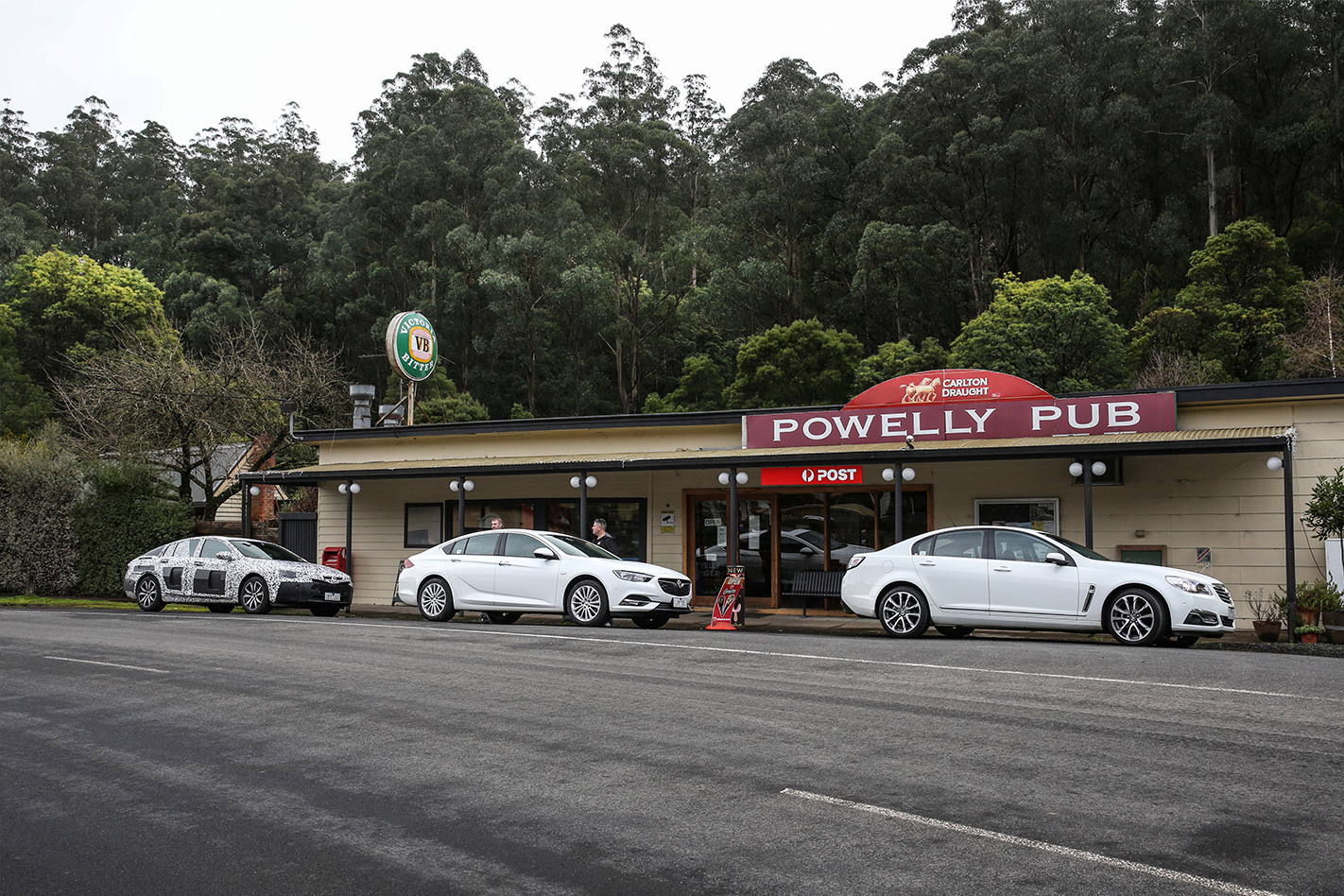
The V6, on the other hand, is the car that really should get people talking. Its strong personality and terrific all-wheel-drive system give it a genuine USP, especially in wagon form, and perhaps especially as the Outback-style Tourer. In a rear-view-mirror test, the ZB’s broad visage definitely has presence, which partly compensates for its less-than-inspiring form elsewhere. And we still haven’t seen the VXR, whose unique bumpers, bright colours, and glitzy 20-inch wheels could be just what the ZB’s styling needs.
The new car was never meant to be a large, butch replacement for the VFII. The rear-drivers’ broad stance and masculine flavour might stop traffic at Summernats, but they weren’t creating enough at Holden dealers anymore. So while the ZB may not speak with a strine accent, or a V8 bark, maybe it’s the car Holden needed to have. Only time will tell.
